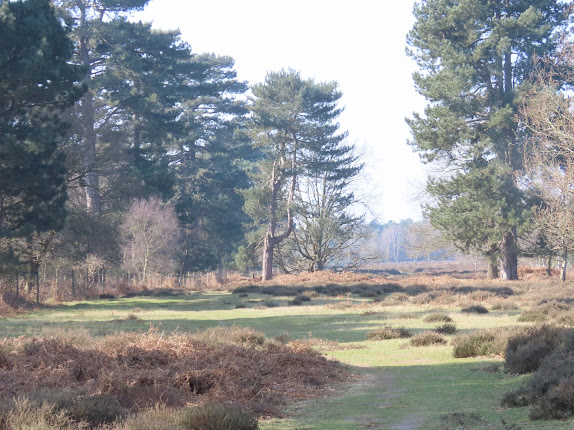Whilst birdwatching the wetland area of our countryside leads to instant gratification when it comes to finding birds, its often good to go off track, to look for the birds that inhabit the heaths and woodlands that grow in Suffolk. The birds that inhabit these lands are necessary smaller, and harder to see as they spend a lot of time in cover, and are more widespread, and not looked over by hides. Therefore there is less to see, but often those you do see are good birds, especially those that inhabit Suffolk's heaths. It means going off the beaten track, to explore new areas, to discover an area of the map that's not set up as a nature reserve.
Heathlands can be difficult to watch as bird densities are low in the scattered heather, when compared to our woodlands, but those that you do see are unique to this habitat. Lowland heath is a globally rare habitat centred on the UK, and Suffolk holds a large proportion of that, and therefore is a refuge for many rare and strange birds.
The heaths at Hollesley and Sutton are huge in extent, they extend for miles, and consist of areas of heath, acid grassland, scattered pine and birch trees, gradually merging into the pine plantations of Rendlesham. I spent a very lovely March day wandering round a large chunk of it. Mid March has the bonus in that the resident birds have started singing, and are easier to see with the lack of leaves on the trees.
With the large extent of pine trees here COAL TITS were the most numerous bird, but it was to the heathland specialists that I paid the most attention to. On the heaths DARTFORD WARBLERS were in song, and despite their name, weren't very musical, eliciting a weak scratchy tune. They are moderately recent colonists, having turned up in Suffolk at the turn of the millennium. They are a dark bird, blue-grey on top with a burgundy red underneath, small, with long tails, which are noticeable in flight.
The reason I came to the heaths was to search for WOODLARKS and especially to hear their song. Woodlark songs are like that of the skylark, their sister species, but is not as complex. It is a rare sound to hear indeed, from a bird that is rare in the country, Suffolk being a stronghold. Unfortunately, for some reason I heard no birds in song, and only encountered one bird, which perched on a tree branch for me to admire. They look pretty much like a skylark, but have a more distinct eye stripe and a black mark on the shoulder of the wing.
Also Surprising, only a couple of YELLOWHAMMERS were about, usually a common bird of the heaths. Another good bird was a WOODCOCK, typically seen only when I accidently flushed it. Later on when walking through some pine trees I came upon a huge flock of SISKINS, the combined sound of their sighing calls radiating through the wood, although being in the pine trees, I rarely saw any. A bit further on I found a TREECREEPER in a tit flock, a bird I haven't seen a lot of recently.
With the emergence of Spring a lot of other wildlife was out and about enjoying the warmest days of the year so far. A COMMON LIZARD was a nice find, seen by the MOD compound. I was alerted to a rustle in the bracken and came across the animal, it seemed to be caught, so I let it go free, running off into cover. The heaths are a good spot for a large herd of FALLOW DEER which can be encountered quite often. They seem ok with people as long as no one gets too close. A herd of fifteen animals were seen today, including a male with antlers, who gently moved off through the bracken when I came too close to them.
The Suffolk Coast has so many natural splendours that it almost an embarrassment of riches when it comes to wildlife. What the most difficult decision for a birdwatcher like myself is, is where to go, because there are so many places available to explore. Although the wetlands on the coast are justifiably the most famous places, areas like these heaths, off the beaten track somewhat, can also hold birding goodies found nowhere else. And it shows that these places can exist next to our food producing farmlands, they don't have to compete with each other. It is easy to allow nature to thrive in our countryside, all we have to do is just let it back in.








No comments:
Post a Comment